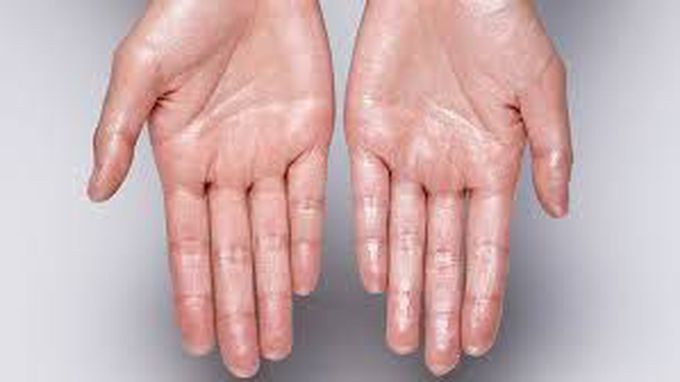


Types of Hyperhidrosis
Hyperhidrosis can be divided into 2 types, depending on whether an obvious cause can be identified. These are known as primary and secondary hyperhidrosis. Primary hyperhidrosis Hyperhidrosis that has no obvious cause is known as primary hyperhidrosis. Although it's not clear why it develops, it's thought to be the result of a problem with part of the nervous system called the sympathetic nervous system, and it's possible your genes may also play a role. Secondary hyperhidrosis If a cause of hyperhidrosis can be identified, it's known as secondary hyperhidrosis. Secondary hyperhidrosis can have a number of different triggers, including: pregnancy the menopause – when a woman’s monthly periods stop anxiety low blood sugar (hypoglycaemia) an overactive thyroid gland (hyperthyroidism) obesity certain medications – including some antidepressants, propranolol, pilocarpine, and bethanechol being drunk or "high" on drugs, or withdrawing from alcohol or drugs if you have become addicted to them some infections, such as tuberculosis and HIV Parkinson’s disease disorders of the blood cells or bone marrow, such as Hodgkin lymphoma (a cancer of the white blood cells) Secondary hyperhidrosis often starts more suddenly than primary hyperhidrosis and tends to affect the whole body.
I’ve been living with Parkinson’s disease for quite some time, and for years, I struggled to find lasting relief. While medications offered some temporary help, the symptoms always returned and often worsened.Out of a mix of hope and hesitation, I decided to try an herbal treatment program from NaturePath Herbal Clinic. I’ll admit, I was skeptical at first. But around the fourth month, I began to notice real, steady progress.my tremors became less frequent the stiffness in my body eased My balance and coordination gradually improved It wasn’t an overnight transformation, but it was consistent and life changing. For the first time in years, I feel more in control of my body. I can move with greater freedom, sleep more peacefully, and enjoy daily activities without the constant discomfort I once accepted as normal.The improvement I’ve experienced physically, emotionally, and mentally has been nothing short of upliftings.If you're exploring natural options for managing Parkinson’s, I wholeheartedly recommend looking into NaturePath Herbal Clinic. Their approach has made a real difference in my life, and I’m truly grateful I gave it a chance. www.naturepathherbalclinic.com info@naturepathherbalclinic.com


